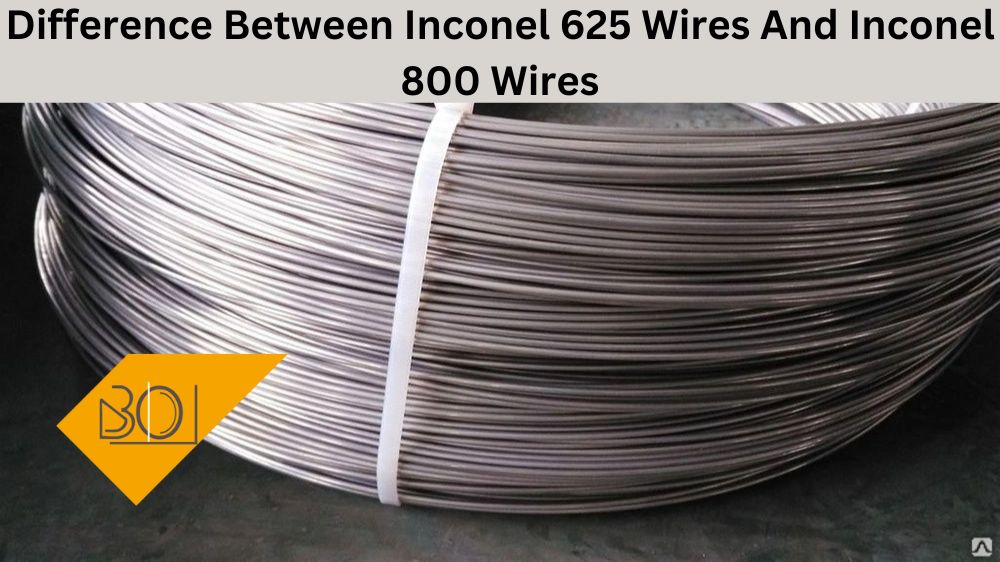Inconel is a brand name that refers to a group of corrosion-resistant alloys that can withstand high temperatures and pressures. These alloys are commonly used in aerospace, chemical processing, power generation, and marine engineering industries. Inconel wires are highly sought after for their thermal stability, reliability, and durability. However, different grades of Inconel wires are available in the market, each with unique properties and applications. In this blog post, we will explore the key differences between two popular grades of Inconel wires: Inconel 625 and Inconel 800.
What is Inconel 625 Wires?
Inconel 625 is a nickel-based superalloy highly resistant to high temperatures and corrosive environments. It primarily comprises nickel, chromium, and molybdenum, with trace amounts of iron, titanium, and aluminium. This unique composition gives Inconel 625 wires exceptional strength, toughness, and oxidation resistance. Moreover, its ability to maintain its mechanical properties at extreme temperatures makes it a popular choice for aerospace applications. Additionally, Inconel 625 wires are widely used in chemical processing due to their resistance to acidic environments and seawater corrosion. They are also commonly used in the marine industry for parts such as bolts and springs.
Composition
Inconel 625 is a nickel-based alloy containing chromium, molybdenum, and niobium. It has a high level of corrosion resistance and is often used in applications involving seawater, sulfuric acid, and acidic gas environments. Inconel 800, on the other hand, is an iron-nickel-chromium alloy that has high strength and excellent resistance to oxidation at high temperatures. It is particularly useful in environments with high carbon dioxide levels and furnace parts.
Mechanical Properties
Regarding mechanical properties, Inconel 625 has a higher tensile strength and yield strength than Inconel 800. It is also more resistant to fatigue and stress corrosion cracking. Inconel 800, however, has better creep and rupture strength at high temperatures, making it suitable for prolonged heat exposure.
Weldability
Inconel 625 has good weldability and can be welded using TIG, MIG, and SAW welding methods. It can also be brazed and soldered. Inconel 800, however, needs better weldability and special techniques such as gas tungsten arc welding or electron beam welding. It is not recommended for brazing or soldering.
Applications
Inconel 625 is often used in marine engineering, chemical processing, and aerospace applications. It is commonly used in seawater piping systems, heat exchangers, and engine components. Inconel 800, on the other hand, is used in furnace parts, power plants, and the chemical industry. It is commonly used in high-temperature applications such as heat exchangers, furnace muffles, and particle accelerators.
Cost
Finally, there is a significant difference in the cost of Inconel 625 and Inconel 800. Inconel 625 is more expensive than Inconel 800 due to its higher nickel content and better corrosion resistance. However, the cost of Inconel wires may vary depending on the diameter, length, and quantity required for a specific application.
Conclusion
In conclusion, Inconel wires are an excellent choice for applications that involve high temperatures, pressures, and corrosive environments. Choosing between Inconel 625 and Inconel 800 wires depends on the application’s specific requirements, such as mechanical strength, weldability, and cost. Inconel 625 is more suitable for seawater, acidic gas environments, and stress corrosion cracking applications. It also has good weldability and is commonly used in marine engineering, chemical processing, and aerospace. Inconel 800, on the other hand, is more suitable for high-temperature applications such as furnace parts, power plants, and particle accelerators. It has higher creep and rupture strength but poor weldability. Understanding the key differences between these two popular grades of Inconel wires will help you make an informed decision and choose the right wire for your specific application.

